Meddlesome bees and a porcini carpaccio
A face full of bees, being stung (I lost count) and a rather nice way to eat porcini
‘Always close your zipper.
That’s good advice.’
Will Cooper
West Berkshire, October 2024
What began as a simple trip to the hives for a work through with our bees on what was very clearly the wrong day for these feisty small creatures, ended with me stung seemingly around five times at the very least, twice on the neck, the rest on my fingers,thumb and the back of my hand ( I lost count), with more appearing as the days pass by, aggravated by anything warm. I’m quite used to bees sometimes being a little tetchy and I’m more than happy to work with them despite their protestations, though this was something quite different.
It’s a funny feeling waiting to see if anaphylaxis might strike.
I normally might expect a dozen or so curious little souls to come out and investigate whoever might have the temerity to open their home mid afternoon, lifting out their dark, warm frames, exposing them to the daylight. I might expect perhaps, the odd loud buzz next to my ear to let me know who’s boss, telling me to be quick at the very least, my head protected only by the very thin mesh of my veil, making the threat of a sting to the ear more real.
On this day, hive one was calm, despite not being opened for the last eight or so weeks, the girls quite happy to be lifted out it seemed, turned and rotated in the dull afternoon light, slightly cold if I think about it, but nothing they haven’t been used to. The queen made an appearance, long, plump and well cared for, with her bright green dot that marks her, a very visible beacon amongst the clusters of the thousands of bees that droop heavily from the frames as we lift them out from the dark and warmth of the hive. A small ball of bees drop from the edge of the frames onto the grass with a dull plop, rising back up on the wing to check us over as we stand here in the gloom of an autumnal day beneath the shadows of the gnarled apple trees that channel the wind over the hives.
Closing up hive one, happy with what we have seen, sealed brood, eggs, larvae and young bees all going about their business we move on.
All seems good.
The brass ratchet that secures hive two opens with that familiar ‘pop’, echoing through the wooden boxes as the spring releases its grasp on the bracket. With the roof off, checking through their hexagonal world of honey-filled wooden frames (that I must take out in the next week or so), it becomes very clear that they are suitably unimpressed. What must be thousands of the fuzzy little golden and brown stripey girls, swirl upwards, agitatedly around our suits, jabbing away at our veils.
This is most unusual.
I first realised something might not be right when I felt something move in my beard. I don’t have a beekeeper’s beard if indeed such a thing might exist, except in the beekeeping books of old, but it is still long enough for a small flying insect to get lost in (also thankfully long enough to prevent said insect’s stinger from reaching my skin), though when you are zipped into your bee suit, it is most unusual to find a bee in your beard.
It is then more unusual to find more than one.
For however it happened, and I’m still at a loss to work it out, I felt a sharp jab on the side of my neck, and it became quite clear that I had not just one, but a handful of bees walking around inside my face veil, finding themselves most vexed to be there in the first place, most likely to have found a tiny hole where I hadnt closed my zipper properly.
‘Always close your zipper.
That’s good advice.’
Quite at a loss as to what I might do that might prevent me from a faceful of stings, I walked away slowly through the low hanging branches of a hazel tree to discourage and confuse any that might follow me, then up the steps to a quiet patch of laurel hedge, immediately followed by a cluster of bees however, drawn to me by the attack pheromone that controls the hive at this point, a pheromone that had at this point enveloped my suit, so my unwise decision to take off my gloves to attempt to remove the hood enabled the little creatures to sting my hands. The bee on my chin had had enough and dropped off, and I stood there, fizzing with adrenalin removing the little barbed stingers from about my person.
As hive two was still open, and what must have been a completely full colony of over fifty thousand bees, basking in the chill of a dull Berkshire afternoon, the hive needed to be closed quickly, as they were enraged and also susceptible to the cold, so as to return to some kind of normal I walked back down to the orchard and was immediately set upon again by a small advance party of sentries, driven wild by the sting pheremones that instructed them to attack once again. Quickly the hive was closed, returning them to their afternoon of hive duties after such a intrusion had ruined their day.
And mine.
I had made mental notes of what tasks must I must carry out next week if indeed they allow me back in, though I’ve never been one to not get back on the proverbial horse.
I must rearrange the hive setup, swapping the honey stores in the frame boxes to down underneath the brood box for the winter, closing their front door from wide open to a simple small entrance hole, pinning the long metal mouse guards over their door, thereby preventing any errant small mammals from trying to overwinter in the warmth of the hive. I shall turn the boxes to face the ‘warm -way’, with the flat face of the frames facing into the wind. This will be easy in the calm of hive one, though the same must be performed in unruly hive two. I must also remove the top wooden box of honey frames form hive two, firstly inserting a clearing board underneath for a couple of days to allow the bees to exit the sealed combs of honey, thick with capped beeswax, making the journey downstairs to their queen. If all goes well, after two or three days (no more or the crafty bees will re-learn the way back upstairs to the honey through the one way exit board) I’ll then lift off the heavy wooden box,, devoid of bees with its pale wooden frames of sticky yellow wax capped honeycomb that drip onto your shoes as you walk, I’ll place the hefty cedar box in a wheel barrow and push it up to the barn, where I’ll wrap it for a day then start the extraction.
Hive one is a smaller hive this year, so no honey will be taken this year. They get to keep everything they have made. We dont need it, and it is theirs to keep. Hive two is a huge colony that has filled two ‘supers’, so we take one for ourselves, they will have the other, which will be plenty for them to overwinter.
Firstly, holding each frame in one hand looking for evidence of wax moth, which I’ll cut away if the tell tale white trails through the honeycomb are visible, then with a sharp knife, in a swift neat downwards stroke just below the waxy surface, I’ll remove the wax capping that seal in the little hexagons of honey beneath. Loading the small wooden frames into the spinner, starting the motor, letting them spin for twenty minutes, ( a manual machine ensures hours of turning by hand so I’m thankful for the invention of electricity), the sweet liquid is spun out in thick streams, extracted into litres of viscous raw honey in the bottom of the drum. The frames are then inverted for a second spin, before being placed back neatly into the cedar box, packed in a neat line, just as they were before I took them from the hive. I will then take them back and place them next to the hives for a day or so, allowing the little bees from both hives to clean out the last drips from the waxy cells, licking every last trickle, taking the last bits back to their hives to store away for winter. The remaining frames will be clean and empty, just the neat little rows of hexagonal cells of ordered wax that they know how to build so beautifully.
This cleaning out of the frames, tops up their stores in preparation for the approach of winter. With the number of bees dwindling as winter approaches, a full hive of fifty to sixty thousand bees will taper off naturally through the colder months, leaving just a nucleus of bees that will attempt to overwinter, keeping the queen warm by forming a ball shaped cluster in the centre of the brood box. I shall feed them some thick syrup once in November to ensure they are topped up, then over the cold months, I’ll place a kilo of sugar fondant over a small opening in the top of the hive, just under the roof. This will allow them to crawl upwards to eat as much or as little as they need. This way, I’ve no real reason , once they are closed up to visit them till spring, unless I choose to give a midwinter treatment for varroa mite of whether to or not as yet, I’m still undecided.
Whatever I choose to do, I must remind myself
‘Always close your zipper.
That’s good advice.’
Will Cooper 2024
A dish that use a spoonful or two of honey
Carapccio of porcini mushrooms
Whether you know them as porcini, cepes, bolet or penny buns, now if you’re lucky, is the season to find them. They are available in the swish food halls of the expensive shops, but are also free if you know where to look and you are confident enough in your identification.
With all wild foods, identification is key. There must be no element of doubt in the identification of your ingredients, for fear of a terrible couple of days in the bathroom or a week of dialysis in a hospital bed, followed by a swift death.
Find yourself a small basket of porcini, free from contamination by larvae. With a damp cloth, wipe clean the mushroom, then as I do, use a thin bladed peeler to pare away the outer layer of the stalk. Cut off the base of the stem and marvel at the cocoa coloured and bright white mushroom.
These are one of the few mushrooms that are good to eat raw.
Slice what you have, as thinly as you’re able, not being too troubled by the pieces that might break off. When you have a good handful of slices, stop. Save any more porcini you might have for something else.
In a small bowl, place a good spoonful of liquid honey, add the juice of half a lemon and stir. Add a small splash of cider vinegar and then whilst stirring, pour in a few tablespoons of olive oil to make a dressing that you re happy with. Add a little salt and pepper. If you have fresh thyme, then certainly add a little, along with a tiny amount of finely grated garlic.
Take a plate and spoon over a little of the dressing, then arrange the slices of the raw mushroom over in a single layer, making them look neat as you work. Season the surface area with a little sea salt and milled pepper and spoon over more of the dressing. If you have chives and marjoram the feel free to add them along with a fine grating of lemon zest.
If the mood takes you, add shavings of good parmesan.
You have made something delicious.
And whilst it is mushroom season, I shall endeavour to go hunting through the recipe boxes that I keep in my attic, to dig out a recipe for a porcini ketchup for you. And I still owe you my recipe for ‘Sarde in saor’, but the bees took priority today.
And on that note,
Until next week,
William




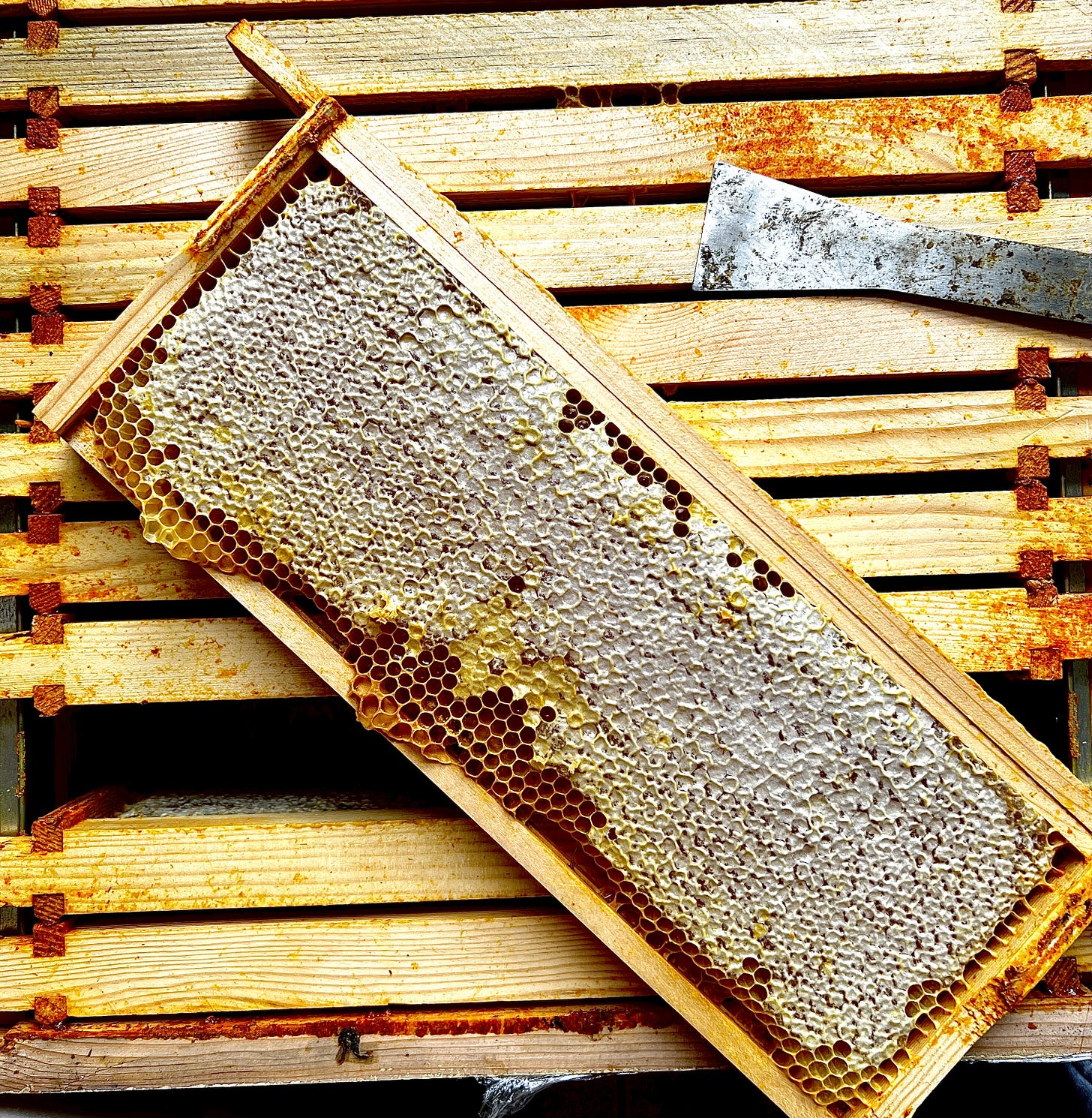
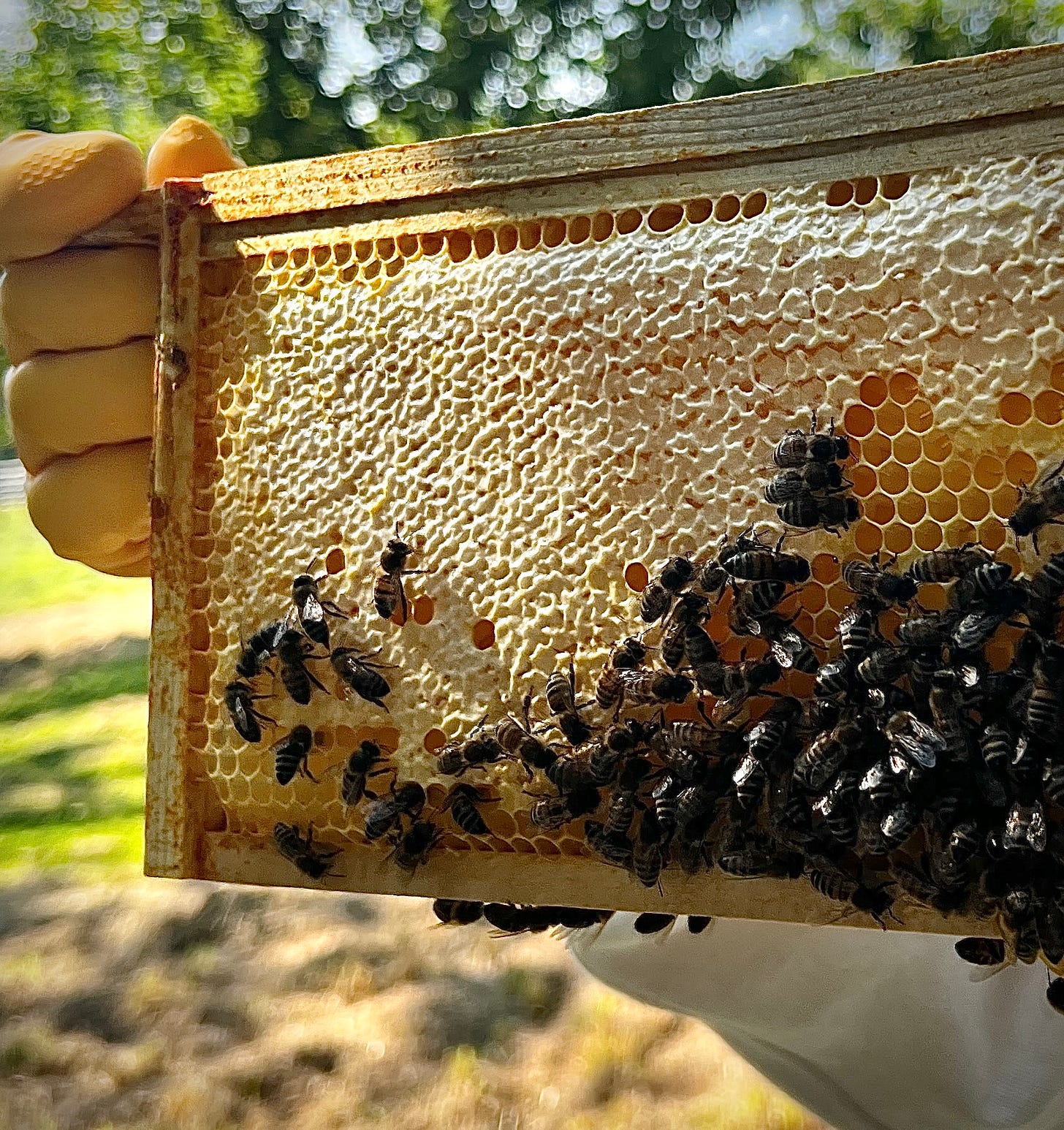
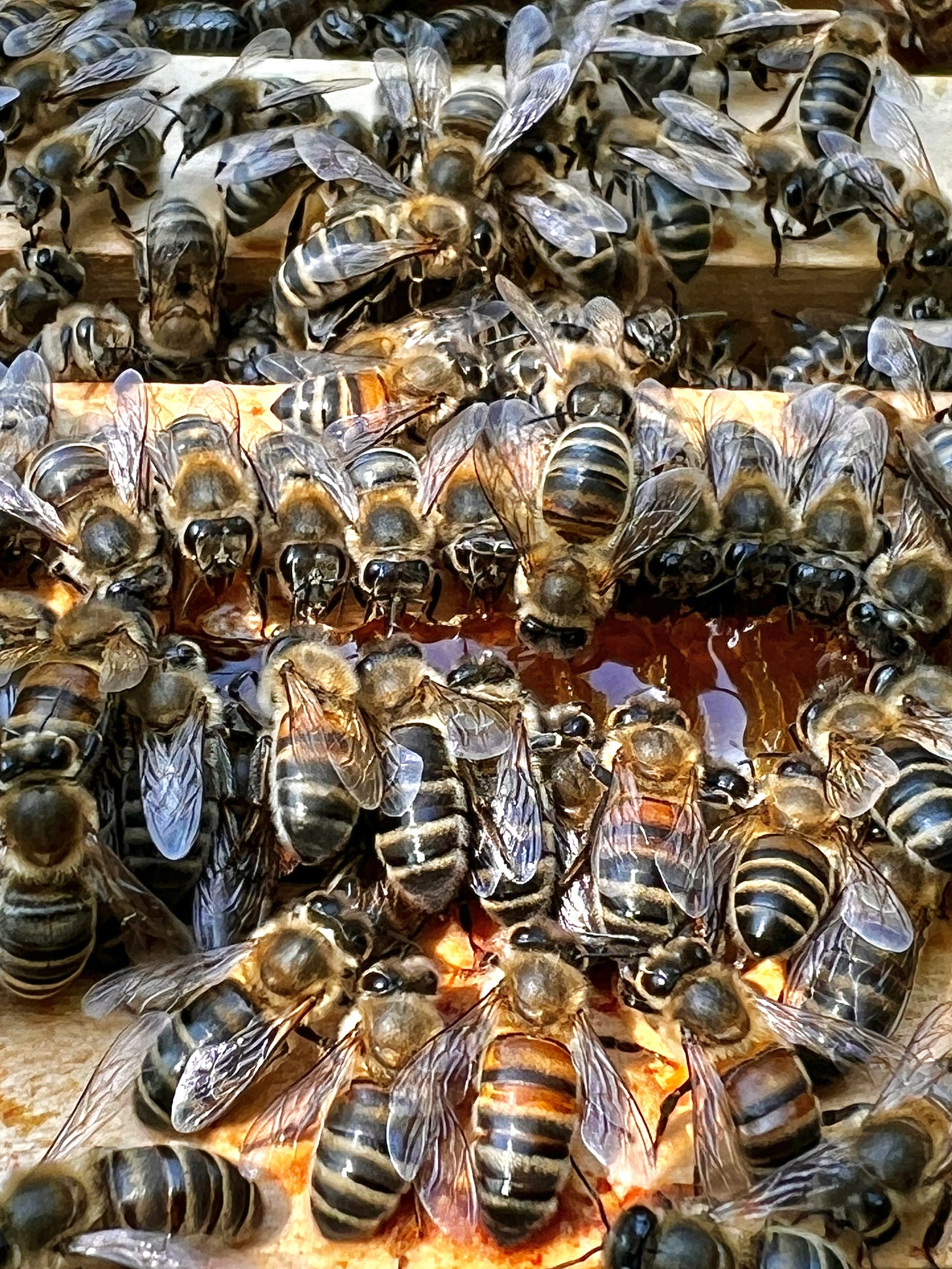
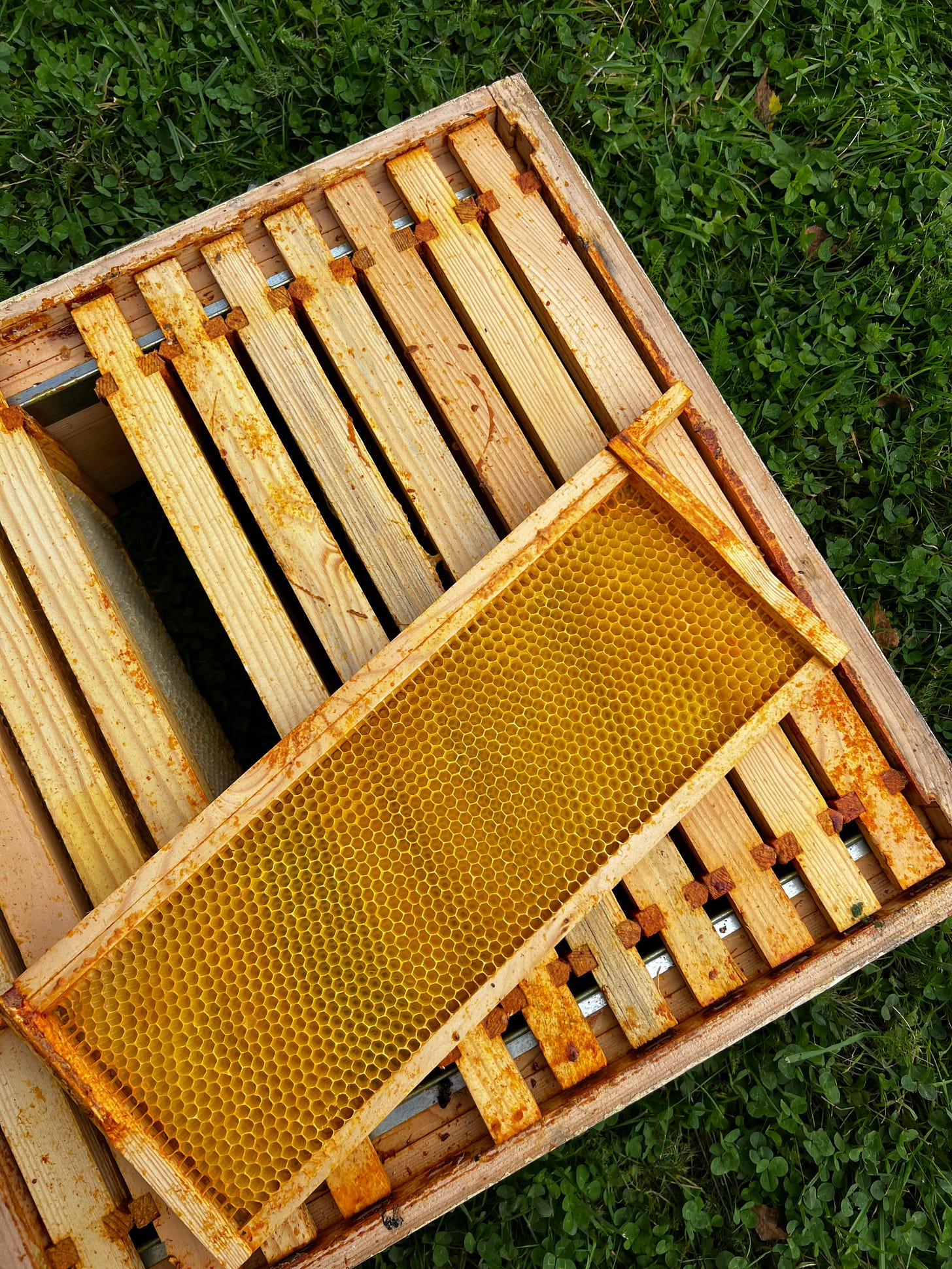
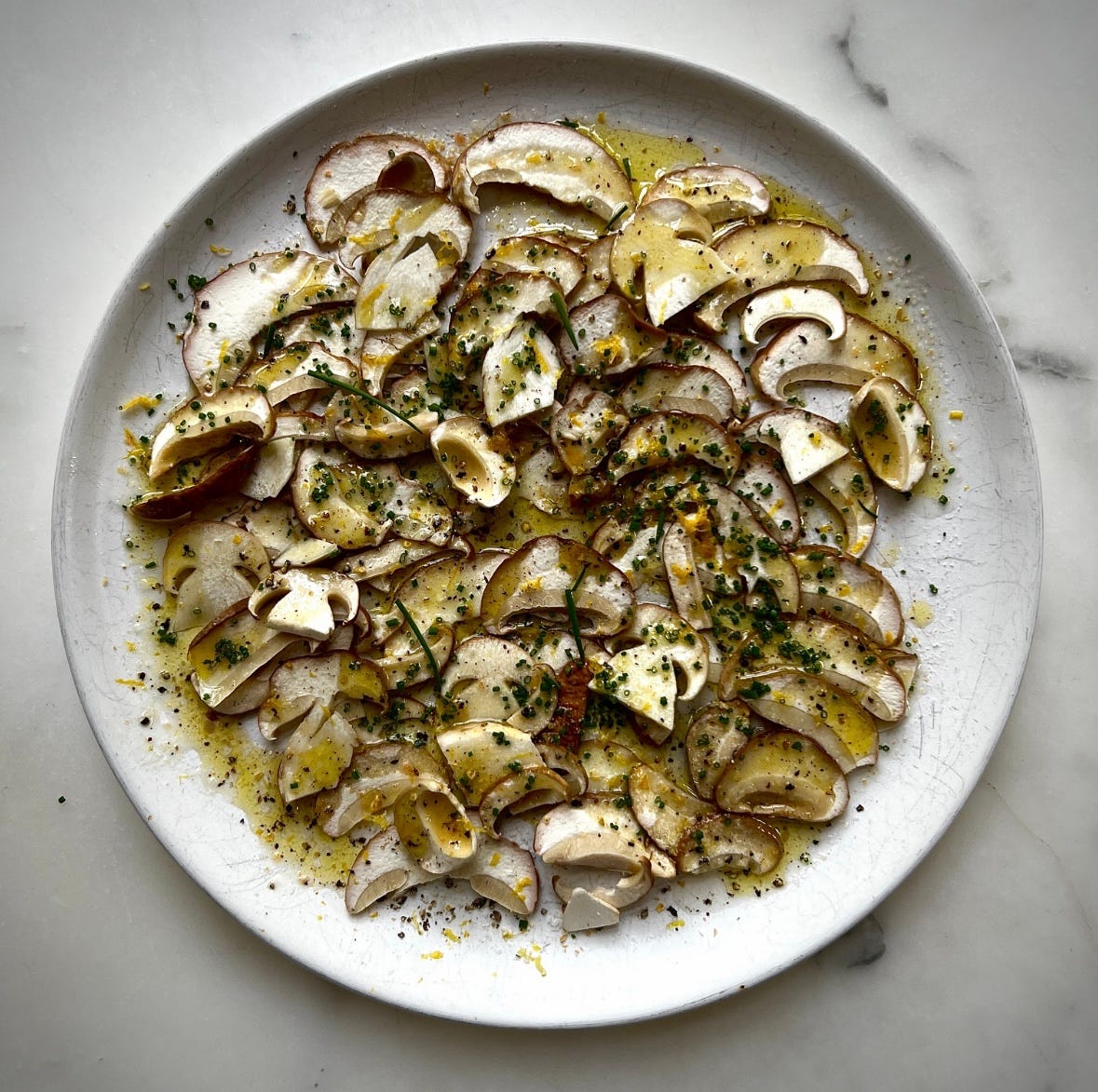
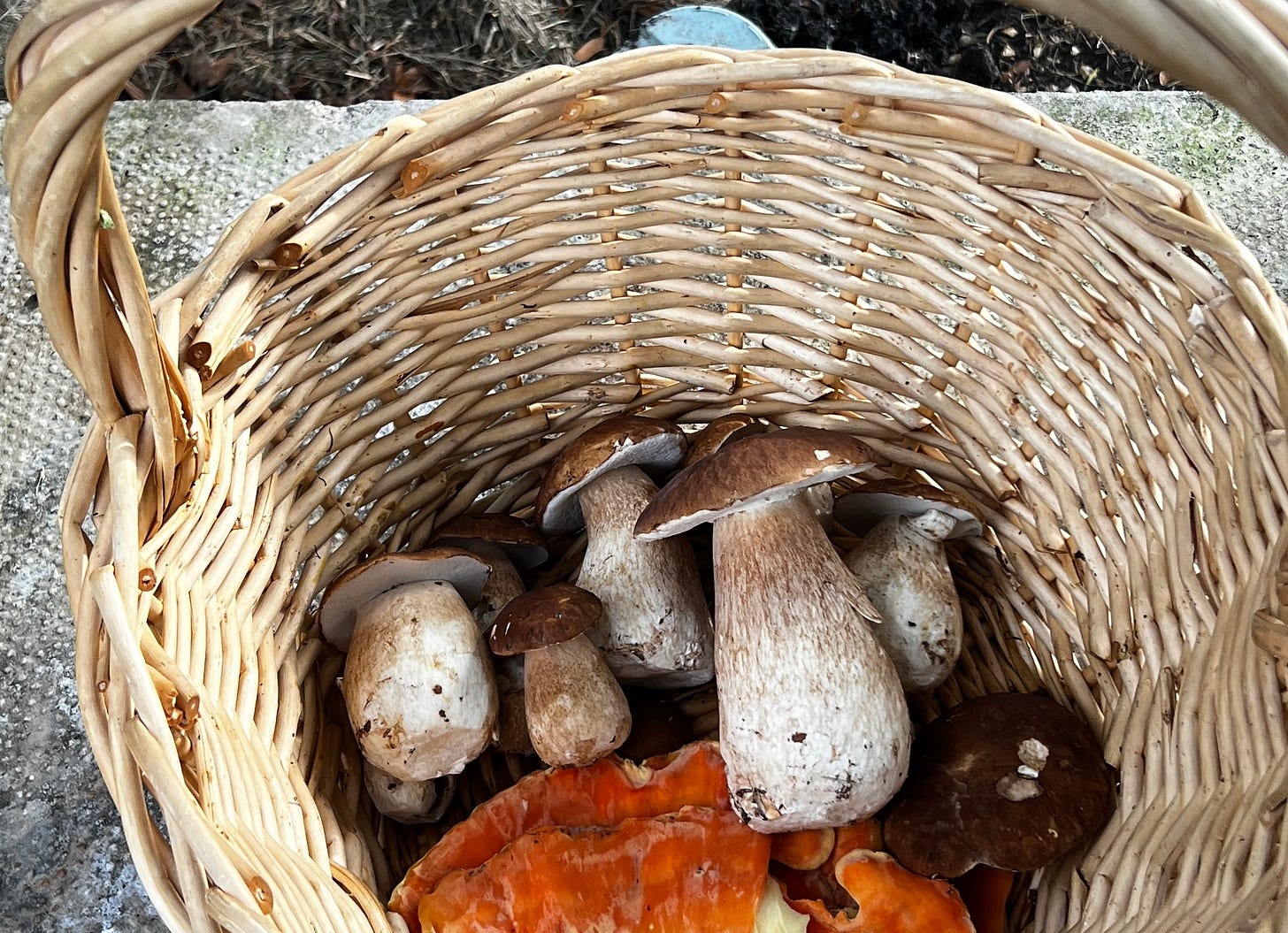
Always close your zipper is very very good advice
I hope you are well now. One bit of useless information I have about bee sting: in my homeland the old ones believe if you are stung by a bee in summer you will have a winter of no-rheumatoid aches.